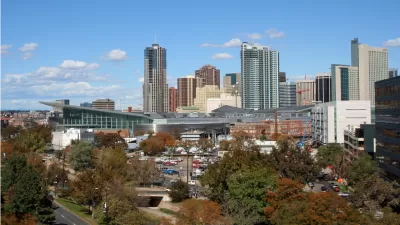Peter Rogerson crunches the numbers on 50 years of demographic shifts.

For 50 years, the Baby Boomer cohort has largely defined the demographic shape of the United States. As they grew up, the country's median age increased; as they left home, the population spread out. The millennial generation is even bigger, and the two combined have left a "distinctive geographical fingerprint" on the U.S. that geographer Peter Rogerson helpfully unpacks in CityLab.
Planners might be interested to learn that Americans today relocate much less than they did half a century ago, in part because people become less likely to move as they age, according to Rogerson. That makes a compelling reason for cities to adopt planning principles to facilitate aging in place—particularly in states like Maine, Pennsylvania, and Connecticut, which all have a median age over 40.
When they do uproot, migrants young and old tend to move to coastal states. Urbanization in the U.S. is still increasing, with smaller cities seeing the most population growth—but many larger cities are actually shrinking, Rogerson reports, as young adults leave in search of economic opportunity and older adults head for retirement regions.
Head to Citylab for a fuller picture and some interesting interactive maps.
FULL STORY: Mapping America’s Aging Population

Study: Maui’s Plan to Convert Vacation Rentals to Long-Term Housing Could Cause Nearly $1 Billion Economic Loss
The plan would reduce visitor accommodation by 25,% resulting in 1,900 jobs lost.

North Texas Transit Leaders Tout Benefits of TOD for Growing Region
At a summit focused on transit-oriented development, policymakers discussed how North Texas’ expanded light rail system can serve as a tool for economic growth.

Why Should We Subsidize Public Transportation?
Many public transit agencies face financial stress due to rising costs, declining fare revenue, and declining subsidies. Transit advocates must provide a strong business case for increasing public transit funding.

How to Make US Trains Faster
Changes to boarding platforms and a switch to electric trains could improve U.S. passenger rail service without the added cost of high-speed rail.

Columbia’s Revitalized ‘Loop’ Is a Hub for Local Entrepreneurs
A focus on small businesses is helping a commercial corridor in Columbia, Missouri thrive.

Invasive Insect Threatens Minnesota’s Ash Forests
The Emerald Ash Borer is a rapidly spreading invasive pest threatening Minnesota’s ash trees, and homeowners are encouraged to plant diverse replacement species, avoid moving ash firewood, and monitor for signs of infestation.
Urban Design for Planners 1: Software Tools
This six-course series explores essential urban design concepts using open source software and equips planners with the tools they need to participate fully in the urban design process.
Planning for Universal Design
Learn the tools for implementing Universal Design in planning regulations.
City of Santa Clarita
Ascent Environmental
Institute for Housing and Urban Development Studies (IHS)
City of Grandview
Harvard GSD Executive Education
Toledo-Lucas County Plan Commissions
Salt Lake City
NYU Wagner Graduate School of Public Service




























